Goodbye fast fashion, hello slow fashion. The age of the flash-in-the-pan trend is over; the lifespan of the trends that matter is now counted in years, not months.
To put this in broadsheet language, slow fashion is fashion’s third way. No need to make a stark choice between buying into the fast-fashion cycle (consumerist horror show, but jazzy) and swearing off fashion altogether (admirable, but a bit joyless). Slow fashion charts a different course. It is about looking agreeably current, rather than up-to-the-minute. It is about nailing the hemline or the dress shape that defines the decade, rather than the season. It keeps one eye on fashion, but its feet on the ground, remembering that clothes are not disposable.
This is an exciting moment. You know that thing when something really complicated goes wrong, and the first thing you do is turn it off and then on again? And sometimes, it works? Well, that’s basically what we’ve done to fashion. It’s had a reset. Fashion was on pause for the pandemic, but now it is back on – and it’s better than it was before.
It was a shock, when the switch flipped off: production stopped, stores closed, catwalks went dark. And the reset happened in our heads, too. Without shop windows to gaze into, we shopped our own wardrobes instead, rediscovering joy in what we already had. The resolutions many of us had been trying to make about buying fewer clothes were a whole lot easier to stick to when trips into town, and parties, were out of the question. Were we in the spring/summer catwalk season or the autumn/winter one? Suddenly that seemed irrelevant. We wore what would work on Zoom, or to walk the lockdown puppy, or to cheer us up.
As the fashion machine slowly restarts, it is finding a new, slower pace. Designers who were producing four collections a year have cut back to two. Smaller brands are adopting a batch-production model, taking orders in advance: if 45 dresses are ordered then 45 are produced, in the sizes needed, and nothing goes to waste. This means a delay between the day you place your order, and the day you get your dress – but maybe that’s OK. It turns out we have more patience than we gave ourselves credit for a year go.
Slow fashion still has trends, it’s just that they stick around, long enough for you to get a sensible amount of wear out of a piece of clothing. This is not about only ever wearing plain white shirts. (Nothing wrong with classics, but if you’re going to wear the same shirt for the rest of your life then, well, you don’t need me.) Slow fashion is about big-picture fashion, which changes gradually. It does not concern itself with debating padded headbands versus scrunchies, or if you should be doing something clever with a silk scarf. It is the basics – but it is most definitely not basic. Your slow-fashion wardrobe can be summed up in these six key pieces – for spring, summer and beyond. Take time to get to know them: they’re not going anywhere.
The Saturday-morning blouse
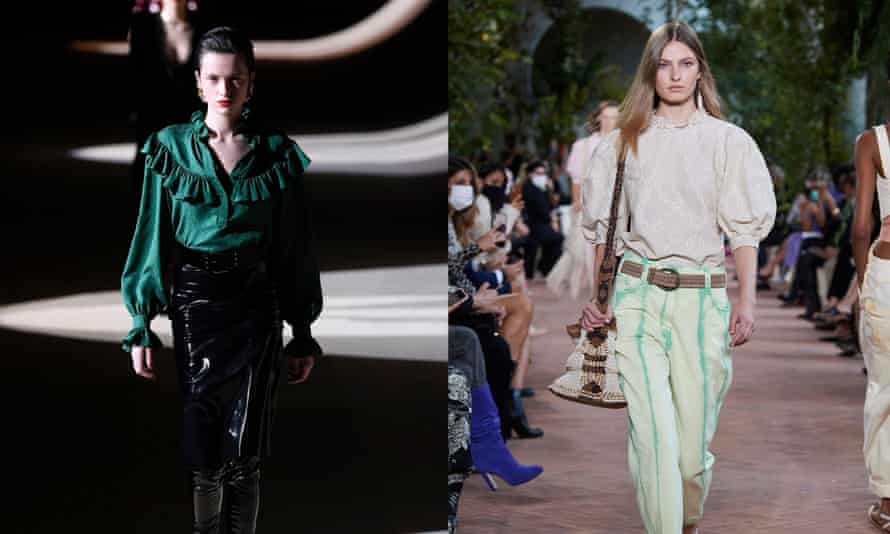
We’re looking for the third way. So if the white shirt is the ultra-sensible eternal classic, while a puff-sleeved blouse in pink gingham with an outsize broderie anglaise prairie collar would be this season’s hot take, we are aiming somewhere in between. Let’s call it the Saturday-morning blouse. Maybe you have a vintage French one in your wardrobe, which you picked up at a market while shopping for baguettes and cheese on holiday, all flirty and bohemian and déshabillé, like Emmanuelle Béart in Manon des Sources. It could be silky and richly coloured, or the sort of sweet-natured blouse a March sister would have worn in the most recent Little Women film. If you don’t do frills, it could be an oversized, mannish cotton shirt with a ticking stripe. It should be fancier than a T-shirt, but less proper than a shirt. It is invaluable for bringing Saturday-morning vibes (the best ones) to every day of the week.
The grown-up flat shoe
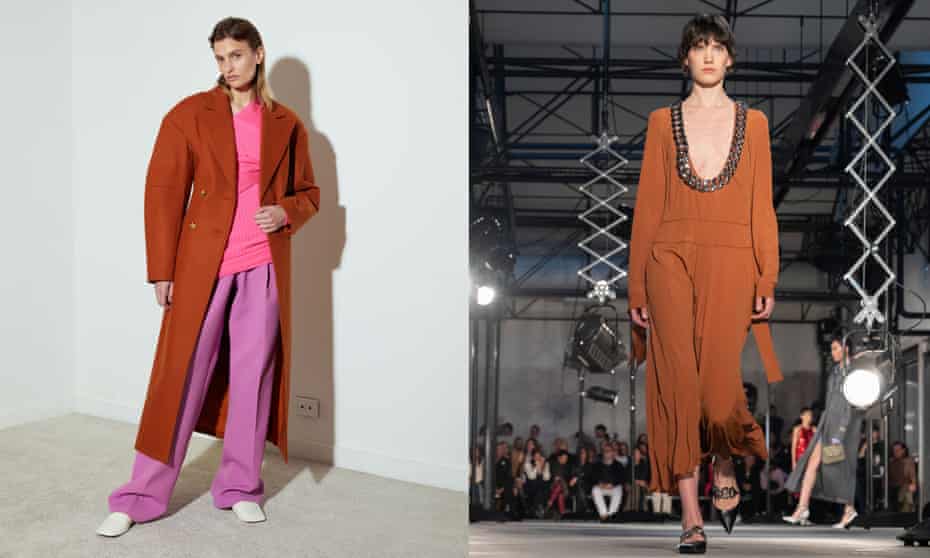
Flats used to be a fashion nonstarter. A decade ago, flat shoes were what you wore to play sport or run errands. When it came to stepping up, that meant changing – sometimes on a doorstep, or in the loos at work – into public-facing shoes, which had a heel. Then flat shoes became a fashion statement. There were limited-edition trainers, fur-soled loafers, designer Crocs (last year) and now this summer’s must-have: the eco-clog. Anyway, forget all those, and go for a classic loafer, or simple, clean, flat-white trainer, or an almond-toe slip-on. Or consider a ballet pump, which is back from the style wilderness as a wardrobe staple – take a look at Angelina Jolie (very slow fashion, in her trench coats and neutral palette, and seldom seen in a fly-by-night trend) who wore them on her recent British Vogue cover.
The smart cardigan
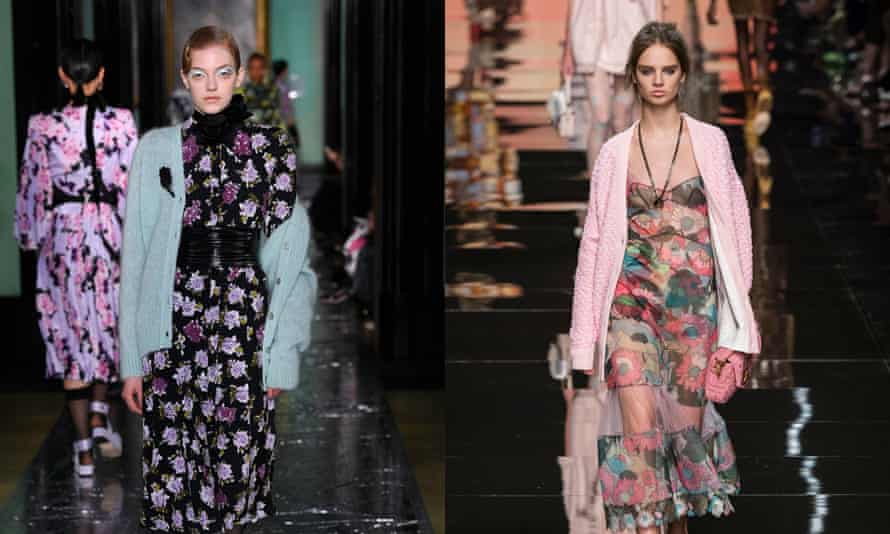
Quite a lot of the cardigans currently on the high street are offered with matching bra tops to be worn underneath. This tells you everything you need to know about how the cardigan’s star has risen, and how its target demographic has changed. The cardigan to consider for inclusion in your slow-fashion capsule wardrobe, however, isn’t the ab-flashing twinset. The slow-fashion cardigan is oversized and chunky, but smart. The sort of thing Coco Chanel wore in Scotland with brogues and pearls, rather than the kind you wore in the sixth-form common room with your thumbs sticking through the holey cuffs. Colour, braid-trimmed pockets, brass buttons are all an asset, so don’t go too neutral. To be a true wardrobe treasure, your slow-fashion cardi should be a trophy piece, not the kind that gets slung over a chair and forgotten about.
The 18-hour dress
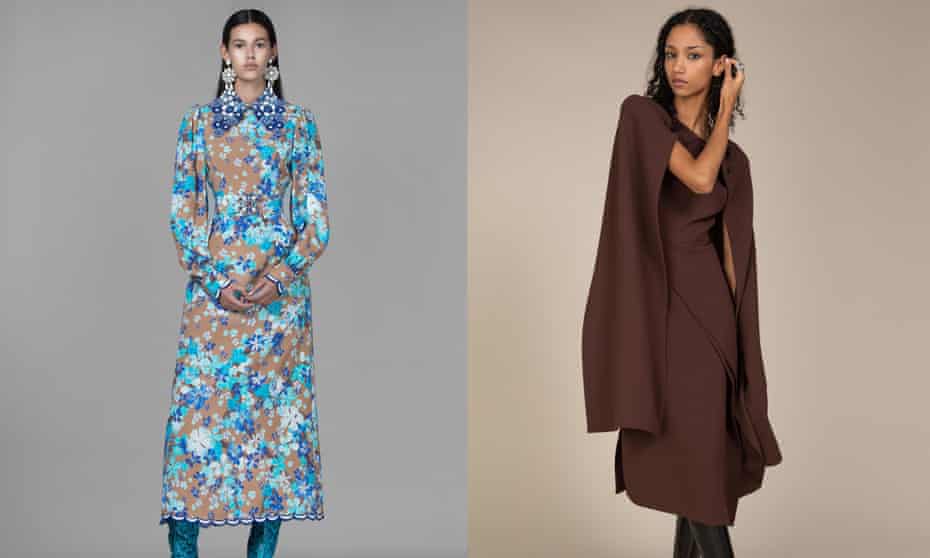
All the It-dresses of the past few years have one thing in common: you can wear them for day and evening. Those nu-boho midi dresses we lived in through 2019? Enough outdoorsy wholesomeness to work at a picnic, but enough fashion content, thanks to the ruffles and tiered skirts, to make them dressy enough for evening. The shirt-dress? Sedate and business-appropriate when seen from desktop upwards, but has enough grace and poise to make an entrance. The Vampire’s Wife-style slim, high-waisted sheath dress? Unimpeachably modest, thanks to the demure high neckline, but undeniably show-stopping when done right. Any of the above are a sound investment. Sleeves are essential, if you are to be comfortable in it all day; rigidity is a nonstarter, for the same reason. Enough detail and interest to make you feel properly and interestingly dressed, but not so much colour, pattern or frill that you long to change into PJs.
The toffee-coloured handbag
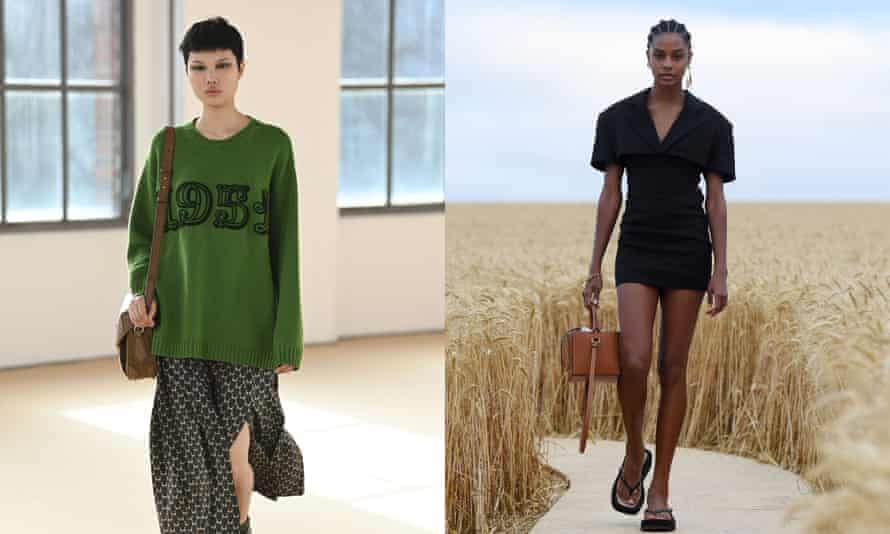
In the bygone age of the It-bag, the dream was to have a big, glossy, expensive black work bag and then a tiny, gaudy, Christmas-bauble of an evening bag. But for the past few years – and for the foreseeable future – the most desirable bag has been in a neutral, somewhere on the reclaimed-wooden-floor scale of ash to oak, in a moderate size that can house everything you need (minimal, now that diaries, tickets and even money live on your phone) without becoming a burden. Straw baskets in this colour, appealing though they are, are not your first choice here, because they miss the mark in a meeting room environment. But their ascent to glamour status tells us something about how the It-bag has changed: utility is now essential.
Sweatpants
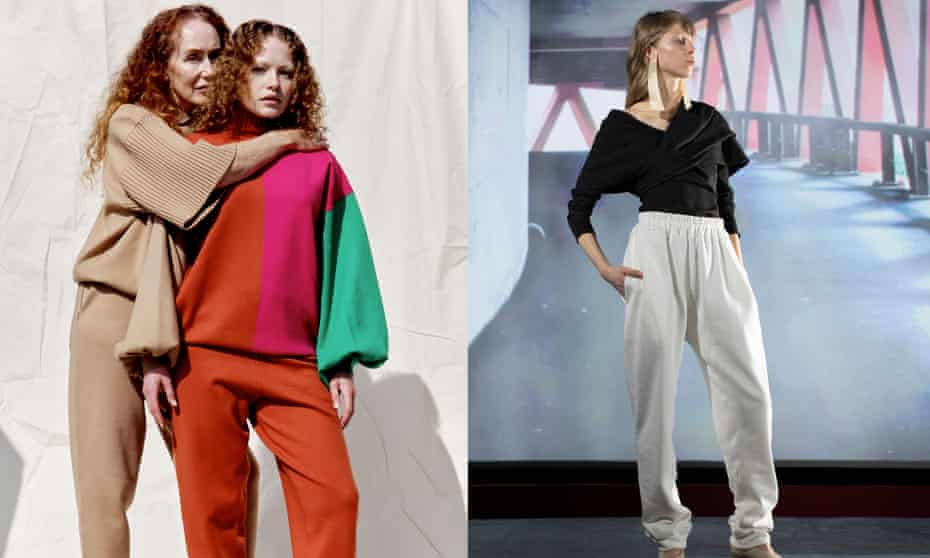
These are to the 21st century what jeans were to the 20th century. The end of stay-at-home orders may be in sight, but the end of tracksuit bottoms is not. Contrary to what you might have read, the pandemic did not invent the sweatpant. Instead, it consolidated a slow-fashion movement that was already repositioning the humble jogger as the go-to utilitarian, democratic trouser of now. In the Venn diagram of modern life, the sweet spot where streetwear meets Netflix-wear meets athleisure is a comfy, stretchy pair of trousers with an elasticated waistband. Pre-pandemic, sweatpants had already established themselves as a bona fide fashion-week look, worn with heels, blazer and statement sunglasses. The past year has rooted them into our psyche. The smarter-but-still-comfy version – neatly streamlined, in a fabric that holds its shape – is now a wardrobe staple: rejoice.
The Link LonkMarch 26, 2021 at 08:30PM
https://www.theguardian.com/fashion/2021/mar/27/forget-fast-fashion-here-are-the-six-key-trends-you-need-for-2021
Forget fast fashion – here are the six key trends you need for 2021 - The Guardian
https://news.google.com/search?q=forget&hl=en-US&gl=US&ceid=US:en

No comments:
Post a Comment